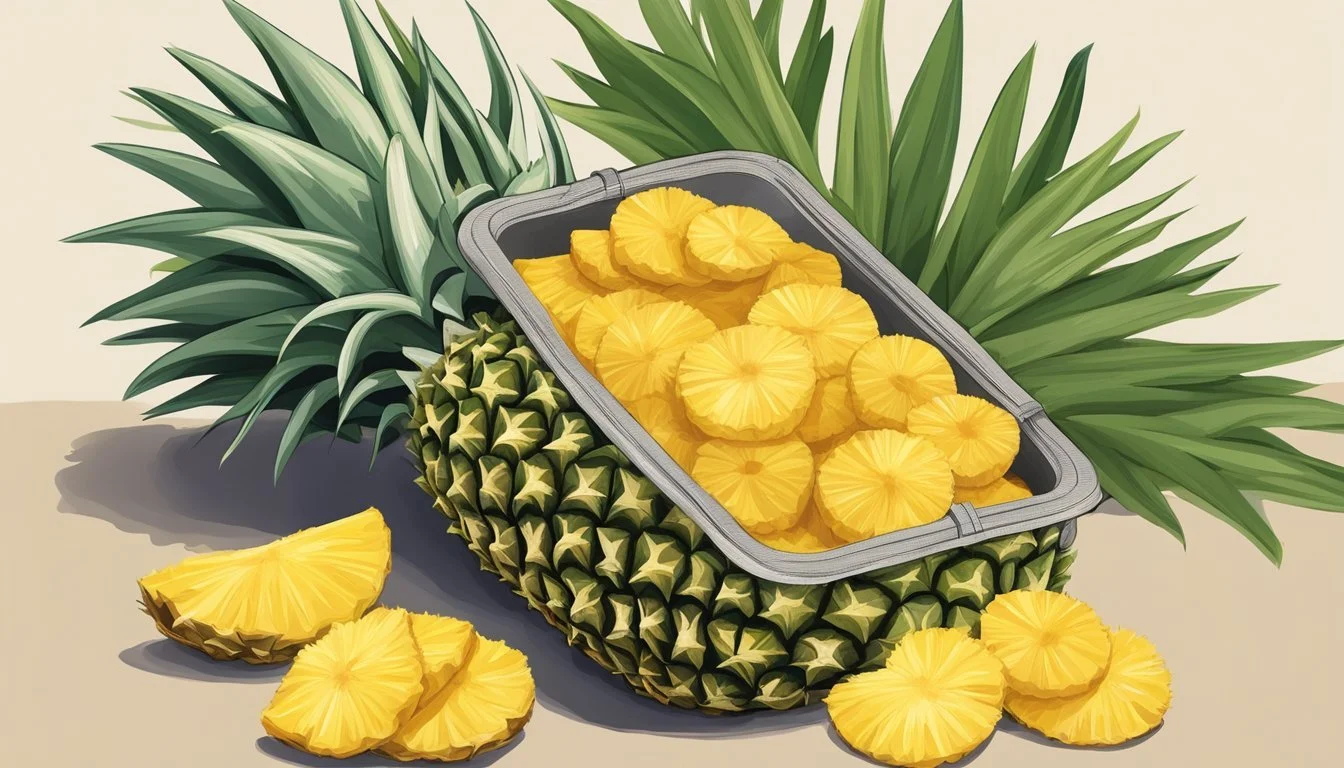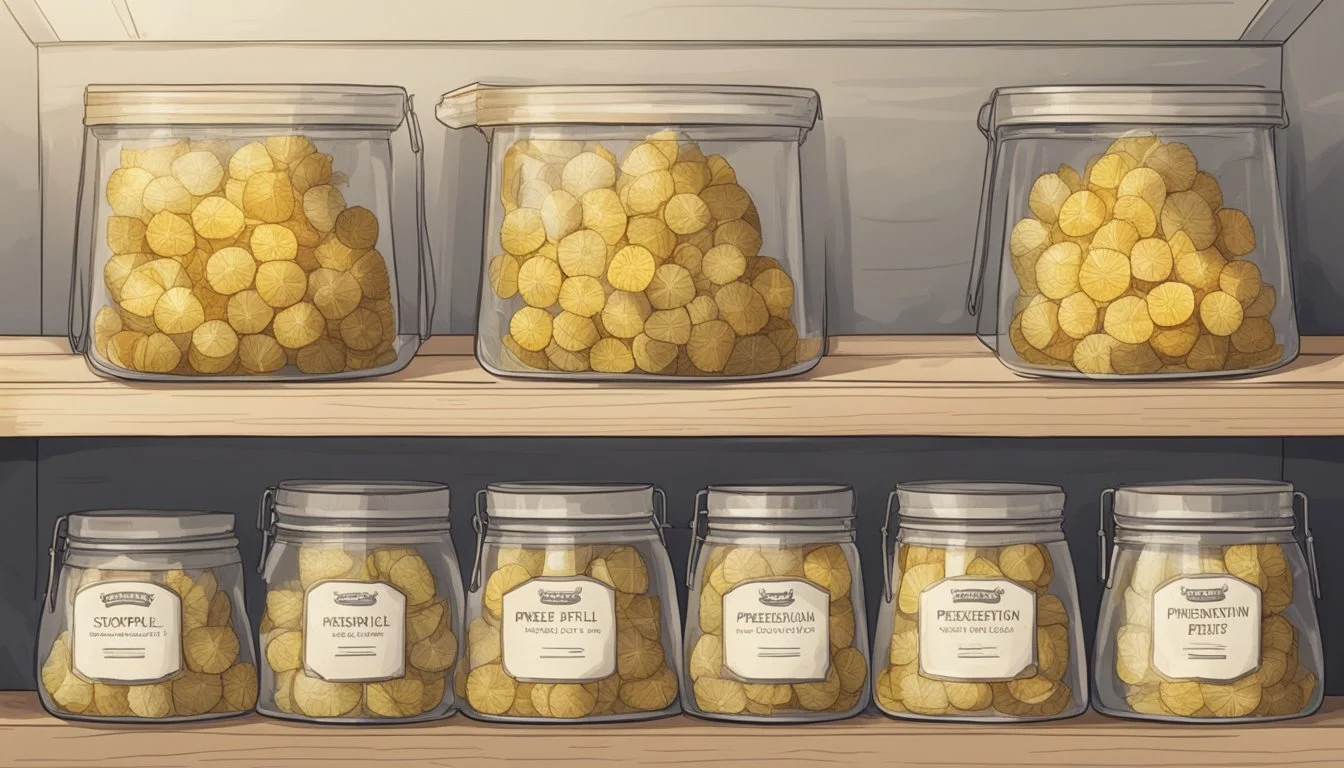How Many Cups in a Pound of Dried Pineapple?
Understanding Measurements
Understanding the equivalent measurements of ingredients is crucial when following recipes or planning portions. For instance, when it comes to dried pineapple, a versatile ingredient used in various culinary creations, determining the conversion from weight to volume is essential. Dried pineapple can add a sweet and tangy flavor to a myriad of dishes, from baked goods to savory entrees, and it's also enjoyed as a healthy snack on its own.
Knowing the conversion of dried pineapple from pounds to cups facilitates accurate measurement for recipes and helps maintain consistency in flavor and texture. The process of drying fruit reduces its original water content, concentrating the fruit's sugar and flavor, and altering its volume compared to its fresh counterpart. Therefore, dried pineapple is more densely packed, and the weight-to-volume conversion differs from that of fresh pineapple.
In the culinary world, precision is important; a pound of dried pineapple will have a distinct cup measurement that is critical for the success of a recipe. Chefs, home cooks, and bakers can confidently use these conversions to ensure the right balance of ingredients. Efficient and precise conversions are also cost-effective, minimizing waste and ensuring that every bit of the purchased product is put to good use in the kitchen.
Understanding Weights and Volumes
In the culinary world, converting between weight and volume is essential, especially when dealing with ingredients like dried pineapple. Measurements need to be precise to ensure the success of a recipe.
Weight-to-Volume Conversion Basics
Weights and volumes are two different methods to measure food ingredients. Weight refers to the mass of an ingredient, typically measured in pounds (lbs) or grams (g), while volume measures the space an ingredient occupies, often in cups, tablespoons, or quarts. The conversion from weight to volume can vary due to an ingredient's density. For example:
1 pound of dried pineapple ≈ 3 to 4 cups
This estimation is because 1 cup of dried pineapple typically weighs around 5.6 ounces or approximately 169 grams.
Importance of Measurement Accuracy
Accurate measurements are vital in cooking and baking, as they affect the taste, texture, and appearance of the final product. For precise conversions, one must consider the specific density of the ingredient. Dried pineapple, for instance, is less dense than water, making it crucial to know its exact weight for a correct volume equivalent.
Common Measurement Challenges
Challenges in measurement conversions can arise due to:
Inconsistent Density: The density of dried pineapple might differ based on the brand or cut, impacting the weight-to-volume conversion.
Compaction: Dried pineapple can become compacted in its container, leading to more pineapple fitting into a cup measure.
Humidity: Variations in humidity can affect the weight and volume of dried pineapple as it can absorb moisture from the air.
In summary, while the conversion from weight to volume is not always straight-forward, understanding these basics is essential for tackling recipes with confidence.
Types of Pineapple Preparation
In exploring pineapple preparation types, one needs to consider the diverse forms in which pineapple is available, each with its unique characteristics and measurements relevant for culinary use.
Dried Pineapple Characteristics
Dried pineapple often comes in the form of chewy rings or tidbits. The drying process removes the majority of the water content, which concentrates the flavor and extends the shelf life of the fruit. It should be noted that the weight and volume of dried pineapple drastically differ from their fresh counterparts due to this moisture reduction.
Rings and tidbits: Often preferred for snacking.
Moisture content: Significantly reduced compared to fresh pineapple.
Other Forms of Pineapple
Besides dried, pineapple can be purchased in several other preparations:
Canned pineapple: Available in forms like chunks, slices, or crushed. Each can size provides a set number of cups when drained, often indicated on the packaging.
Frozen pineapple: Usually sold in chunks and ideal for smoothies or baking, containing most of its natural moisture when thawed.
Preparation Common Forms Canned Chunks, Slices, Crushed Frozen Chunks
Fresh Pineapple Equivalents
Fresh pineapple is typically peeled, cored, and then can be cut into various shapes such as chunks, slices, or crushed for different culinary uses.
Chunks: Handy for eating raw or in fruit salads.
Slices: Often used for grilling or as a garnish.
Crushed: Perfect for baking, sauces, or as a topping.
Form Equivalent Measurement Fresh Chunks Varies by size of pineapple Slices Weight dependent Crushed Typically measured by cups
These equivalents help in converting recipes that call for fresh pineapple into their dried equivalents and vice versa, ensuring accuracy in flavor and texture outcomes in the finished dish.
Dried Pineapple in Recipes
Dried pineapple adds a sweet, tart flavor to recipes and should be used with consideration of its concentrated sugar content and lack of liquid.
Incorporating Dried Pineapple
Incorporating dried pineapple into recipes requires one to chop the pineapple into fine pieces for even distribution. Since the drying process concentrates the pineapple's natural sugars, chefs need to balance its sweetness by adjusting the other sweet components in the recipe. For recipes that demand moisture, like cakes or bread, additional liquid may need to be introduced to compensate for the dryness of the pineapple.
Recipe Adjustments for Dried Pineapple
When using dried pineapple in place of fresh or canned pineapple in recipes, there are two important adjustments to consider:
Sugar Content: If the recipe calls for sugar, reduce the quantity to account for the added sweetness from the dried pineapple.
Liquid Ratios: Since dried pineapple lacks moisture, adjust the recipe by adding more liquid. Measure this against the equivalent volume if using fresh or canned pineapple.
It's critical to thoroughly mix dried pineapple pieces into the dry ingredients before combining them with wet ingredients to prevent clumping. Additionally, if the dried pineapple is excessively tough, it can be rehydrated by soaking in warm water or juice until softened, which should be factored into the overall preparation time.
Conversion Specifics for Dried Pineapple
When working with dried pineapple, the accurate conversion from pounds to cups is essential for cooking precision and recipe success.
How to Measure Dried Pineapple
To measure dried pineapple, one should use a standard measuring cup for dry ingredients. Make sure to lightly fill the cup without compressing the pineapple, as this could result in an inaccurate measurement. It is advisable to slice or chop the dried pineapple uniformly to ensure consistency in the volume occupied within the cup.
Calculating Cup to Pound Conversion
The conversion from cups to pounds for dried pineapple depends on the density of the fruit. 1 pound of dried pineapple typically equals approximately 2.16 to 3 US cups. This range accounts for variations in fruit density and level of dehydration. To calculate the volume, one can use the following table based on the average density of dried pineapple:
Weight (Pounds) Volume (Cups) 0.25 0.5 - 0.75 0.5 1 - 1.5 1 2.16 - 3 2 4.32 - 6
One should note that these are approximate values and slight variations may occur. For accurate recipe results, a kitchen scale is the most reliable tool for measuring dried pineapple.
Nutritional Information
Evaluating the nutritional profile of dried pineapple is crucial to understanding its role in a balanced diet. Dried pineapple is a concentrated source of calories and nutrients typical to this tropical fruit.
Caloric Content of Dried Pineapple
Dried pineapple is rich in calories due to the removal of water which concentrates its sugar content. A common serving size of 100 grams contains approximately 245 calories. In terms of portions, 1 ounce equates to roughly 82 calories, while a 1 cup serving, depending on its density, may vary in caloric content.
Calories per 100g: 245
Calories per 1 ounce: 82
Calories per 1 cup: This can differ based on cup measurement.
Vitamins and Health Benefits
The nutrition benefits of dried pineapple are not only confined to its caloric content. This tropical fruit is known for containing considerable amounts of vitamin C, which supports the immune system. Additionally, dried pineapple provides a modest amount of protein, which is important for muscle repair and growth.
Vitamin C: A serving of dried pineapple packs a punch of this essential vitamin.
Protein: An important macronutrient, protein is vital for bodily functions and is found in small quantities in dried pineapple.
While dried pineapple is not a low-calorie snack, its vitamin content and the benefits derived from them make it a nutritious option when consumed in moderation.
Storage and Preservation
Properly storing dried pineapple ensures it maintains its quality and extends its shelf life. Key considerations include the choice of container, the environment, and handling leftovers.
Proper Storage Techniques for Dried Pineapple
The ideal storage method for dried pineapple involves keeping it in air-tight containers, such as glass jars or zip-seal plastic bags. These containers should be placed in a cool, dry place away from direct sunlight or heat sources. If dried pineapple comes in packaging that is not resealable, transferring it to an airtight container is recommended to prevent moisture and other contaminants.
To further protect dried pineapple, one can line the container with parchment paper, which helps absorb any excess moisture that could compromise the fruit's texture and flavor. It's crucial to ensure that the pineapple is cool before storage to avoid condensation that might lead to spoilage.
Extending Shelf Life
The shelf life of dried pineapple can be extended by following a few additional practices. If one has a leftover portion of fresh pineapple, it can be dried and then stored using the above methods. For those wishing to keep dried pineapple for a more extended period, freezing is an option that can prolong shelf life beyond the typical six months to a year range.
When freezing dried pineapple, first place it in an airtight container or freezer bag, removing as much air as possible. The dried pineapple can be layered between sheets of parchment paper to prevent the pieces from sticking together. Frozen dried pineapple should be thawed at room temperature when ready to be consumed.
By adhering to proper storage techniques and strategies for extending the shelf life, dried pineapple remains a delicious and convenient snack for much longer.







